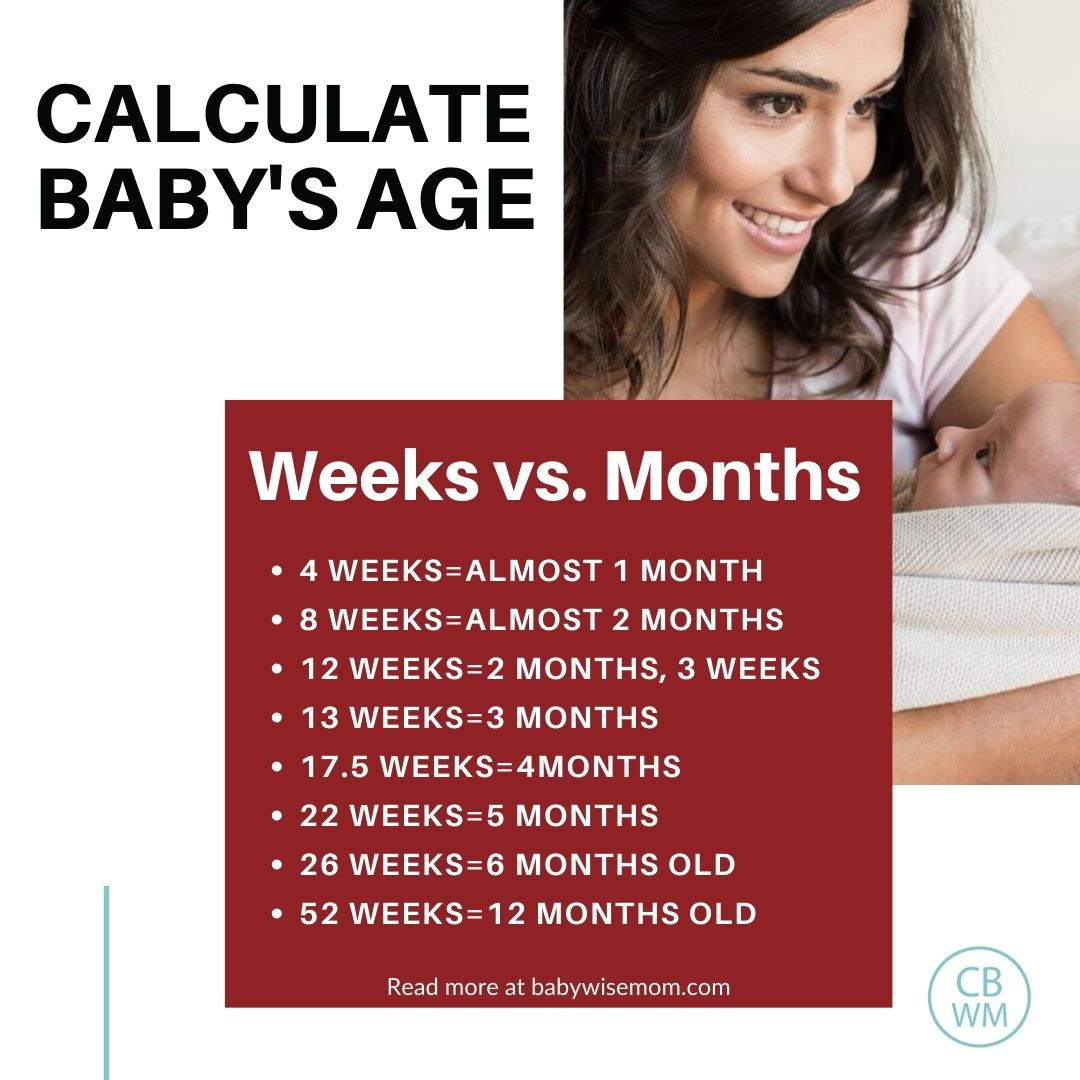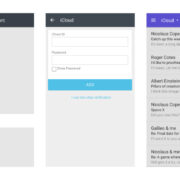As we watch our little ones grow, it feels like they change in the blink of an eye. For new parents and caregivers, understanding the age of a baby in weeks can be incredibly important, as developmental milestones, feeding schedules, and medical checkups are often based on this precise age measurement. But how does one calculate this when the weeks seem to fly by? This guide is tailored to help you easily determine your baby’s age in weeks, ensuring you never miss a step in their incredible journey of growth.

Online Age Calculator
The internet offers a plethora of tools to make our lives easier, and this includes online age calculators designed specifically for babies. These calculators provide an instant computation of your baby’s age in weeks based on their date of birth.
Detailed Steps:
- Go to your preferred search engine and type “baby age in weeks calculator.”
- Select a reliable website from the search results.
- Enter your baby’s date of birth in the calculator’s designated fields.
- Click on the “Calculate” button or its equivalent.
- The calculator will display your baby’s age in weeks.
Summary:
Using an online calculator is quick and simple, making it accessible for anyone with internet access. However, the accuracy might depend on the specific calculator chosen, so it’s important to use a reputable one.
Calendar Counting
If you prefer a more hands-on approach, marking the weeks on a calendar can be an equally effective method.
Detailed Steps:
- Find the calendar you use regularly, whether it’s digital or paper.
- Locate your baby’s birth date on the calendar.
- Count the weeks up to the current date, with each week consisting of seven days.
- Keep a record or mark each week on the calendar to track the passage of time.
Summary:
This method ensures personalized tracking and can be more meaningful as you see the weeks pass on the calendar. However, it may be more time-consuming and prone to errors if not counted carefully.
Mobile Apps
Mobile applications are another modern convenience, with apps available for tracking virtually everything, including your baby’s weekly age.
Detailed Steps:
- Open your smartphone’s app store.
- Search for “baby age tracker” or a similar term.
- Browse the apps, looking at reviews and features.
- Download and install the app of your choice.
- Input your baby’s birth date as prompted by the app.
Summary:
Apps are incredibly convenient for ongoing tracking and often include additional features for logging milestones. Yet, the accuracy and the quality of features can vary by app.
Pediatrician Records
Your child’s pediatrician is an excellent resource for tracking your baby’s age in weeks, as they will have detailed records from each visit.
Detailed Steps:
- Schedule an appointment with your pediatrician if necessary.
- At the visit, ask the pediatrician to confirm your baby’s age in weeks.
- Discuss your baby’s developmental milestones and checkup schedule based on their weekly age.
- Optionally, request a written record to take with you.
Summary:
This method leverages professional expertise, ensuring accuracy. However, it may not be the most convenient option for immediate or frequent checks.
Baby Memory Book
Many parents keep a baby memory book as a keepsake, which can also serve as a method of tracking age in weeks.
Detailed Steps:
- Purchase a baby memory book with weekly tracking sections.
- Fill in the book weekly, noting the date and your baby’s new age in weeks.
- Use the milestone stickers or markers often included to highlight special weeks.
Summary:
A baby memory book is a sentimental and enjoyable way to track your baby’s age while creating a keepsake. It requires regular updating and might not be the quickest method for immediate calculations.
Excel Spreadsheet
Creating a personalized spreadsheet can give you control over how you view and calculate your baby’s weekly age.
Detailed Steps:
- Open Microsoft Excel or a similar spreadsheet program.
- Enter your baby’s birth date in the first cell.
- Use a formula to calculate the difference between the birth date and the current date in weeks.
- Update the current date as needed for ongoing tracking.
Summary:
A spreadsheet is customizable and can be very precise, but it does require a basic understanding of spreadsheet software and formulas.
Weekly Photos
Taking weekly photos can be a visual and fun way to mark your baby’s age.
Detailed Steps:
- Choose one day a week as your photo day.
- Take a picture of your baby each week, possibly with a card or sticker indicating the number of weeks.
- Organize the photos in an album with dates.
Summary:
This is a charming and creative way to observe your baby’s growth, but like the baby memory book, it takes a consistent effort and is not the most straightforward for quick calculations.
Community Forums
Joining parenting community forums can provide external reminders and support in tracking your baby’s age in weeks.
Detailed Steps:
- Find and join a well-regarded parenting forum or social media group.
- Introduce yourself and your baby, including their birth date.
- Participate in weekly age-related discussions or posts.
Summary:
Forums foster community support and can be a helpful reminder, though they rely on active participation and the accuracy of the information shared by others.
DIY Weekly Age Cards
Creating do-it-yourself weekly age cards is a personalized approach that can be fun and educational.
Detailed Steps:
- Purchase or make cards numbered with each week up to a certain age.
- Each week, display the appropriate card and take a moment to recognize your baby’s age milestone.
Summary:
This method is an interactive and festive way to celebrate each week. However, it is more of a commemorative technique than a precise calculation method.
Ask a Friend or Family Member
Sometimes, a friend or family member who loves to keep track of dates can be your go-to for calculating your baby’s weekly age.
Detailed Steps:
- Choose a reliable friend or relative who enjoys keeping track of special dates.
- Ask them to help you calculate and remember your baby’s age in weeks.
- Set up a regular check-in with them for updates.
Summary:
Utilizing someone else’s enthusiasm for dates can be a heartwarming way to involve loved ones, but it’s based on their availability and commitment.
In conclusion, there are numerous methods ranging from high-tech to simple and sweet for determining your baby’s age in weeks. Whether you prefer digital tools or more tactile approaches, the key is consistency and choosing the method that aligns with your lifestyle and preferences. Each option has its own set of benefits, from the detailed record-keeping of a spreadsheet to the nostalgia of a baby memory book, or the community aspect of parenting forums. Whichever route you choose, the goal is to celebrate and keep track of your baby’s rapid growth and development.
FAQs
-
Why is it important to know my baby’s age in weeks?
Knowing your baby’s age in weeks can be critical for monitoring their developmental milestones, scheduling vaccinations, and understanding their feeding and sleeping patterns. Pediatricians and child care guides often reference age in weeks for the first two years of life. -
Do I need to download an app to calculate my baby’s age in weeks?
While an app can be a convenient way to track your baby’s weekly age, it’s not a necessity. There are several other methods, like calendar counting or online calculators, which are equally effective. -
Is there a risk of error when calculating my baby’s age in weeks?
Yes, there can be errors, particularly with manual methods such as calendar counting. To minimize mistakes, double-check your calculations or use reputable digital tools that automatically calculate the date difference. -
Can I use these methods to calculate the age in weeks for twins or multiples?
Absolutely. The age in weeks for each child can be calculated individually using any of these methods. If using a digital tool, you may need to perform separate calculations for each child.









